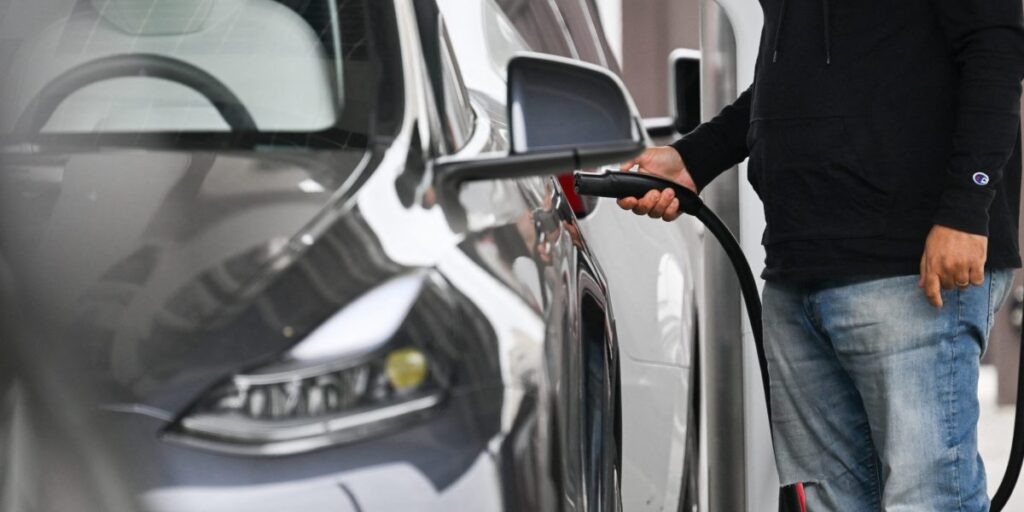
Tehmina Haider and Michael O’Leary lead L Catterton Impact, the impact investing arm of consumer private equity firm L Catterton. Michael is also the author of Responsible: The rise of citizen capitalism (HarperCollins, 2020).
This spring, Exxon Mobil CEO Darren Woods was accused of telling fortune magazine It’s consumers, not ExxonMobil, that are holding back the transition to clean energy. “We have an opportunity to produce low-carbon fuels,” he said, “but people are not willing to spend the money to do it.”
The SEC’s new rules on climate disclosures also put emissions on the shoulders of consumers: Although public companies must now report their emissions, they do not have to include those produced by consumers using their products. Instead, these emissions remain an implicit part of consumer Carbon Footprint.
Many in the climate community are angry about blaming consumers. After all, even the concept of consumer “carbon footprint” was only popularized in the early 2000s through a BP-funded advertising campaign.
But Darren Woods’ principle is sound: It doesn’t matter what sustainable product a company creates if consumers don’t buy it. Rather than blaming consumers for company actions, we should focus on what they actually want to buy.
In the climate movement, we often take a “if we build it, they will come” approach to climate investing, assuming that if we can develop the technology, climate-conscious consumers will be eager to adopt it. Take transport and food, for example. In many countries these two sectors together account for about half of total consumer emissions. In each, we have developed technologies that significantly reduce costs, but we are now seeing how fickle consumer adoption can be.
According to a new analysis from the U.S. Department of Energy, today’s electric vehicles produce 48% lower cradle-to-grave emissions than comparable gas-powered vehicles. However, electric vehicles accounted for only 7.6% of U.S. auto sales last year, up from 5.9% the previous year, but still far from reaching two-thirds of the market share in 2030.
Independent assessments of alternative proteins in our food system show emissions savings of up to 90% compared to beef, similar to the scale of savings achieved by adopting a vegan diet. However, the market share of alternative proteins is only 2% and has not yet entered the mainstream.
Overall, consumption accounts for 72% of greenhouse gas emissions, slightly more than consumers’ share of 68% of U.S. gross domestic product (GDP). To limit global warming to 1.5°C above pre-industrial levels, we need to reduce per capita emissions by 50% within ten years. But whatever the emissions reductions these and other climate technologies boast, they will only come to fruition if consumers like them enough to open their wallets.
At the Impact Fund we lead, we see that while many studies show how much consumers, especially younger consumers, care about shopping more sustainably, the reality is much more complex.
Consumers may like sustainability, but they hate the trade-offs
As with any category, consumers tend to have a set of criteria that they care about most, such as price, quality, or convenience. Eighty percent of consumers now say that brand sustainability is important, but sustainability is almost never their most important criterion. If forced to weigh resiliency against other factors, support for the resiliency option could drop by 70% or more.
In fact, one way to tell the story of plant-based meat’s stalled growth is that even as it comes close to imitating meat, it still fails to surpass consumers’ all-important taste and nutritional criteria. Many consumers are surprised by these almost-meat substitutes, but not enough people like them.
The only way to drive long-term adoption of sustainable products is to reverse the trade-offs and find ways to make sustainability a positive driver of sustainability other standards that consumers care about. Ironically, it only achieves mainstream success when consumers prefer sustainable products for reasons that have nothing to do with sustainability.
For example, more consumers say they buy dairy alternatives because it’s healthier and tastes better, rather than because they want to protect the environment, which organic products have long benefited from. Electric heat pumps currently account for the majority of new heating system sales in the United States, saving the average consumer money. More Gen Z consumers say they buy sustainable brands because of quality or value, rather than concerns about the climate.
As with any consumer market, different consumers may weigh factors differently. For decades, the average fuel economy of cars sold in Europe was about 50% higher than that of cars sold in the United States. This is not because of unique European technology. This is because consumer preferences have historically been underpinned by tighter regulation. A similar pattern appears again in electric vehicles, with penetration rates in Europe twice as high as in the U.S.
While much of the discussion about climate companies has focused on the technological frontier, innovation in business models could also have a huge impact.
Resale, rental, refillable products and reusable packaging all require little new technology but can still exceed key purchasing criteria for consumers. For example, second-hand clothing is growing much faster than overall clothing, primarily because it satisfies consumers’ desire to save money.
The lesson is simple: the consumer is still king. If we want to make significant progress towards a net-zero world, we need to build products they are more willing to buy than traditional alternatives. This is more important than whose environmental balance sheet we decide to measure these emissions against.
We cannot blame climate change on consumers until we provide them with better choices.
More must-read comments by wealth:
The views expressed in Fortune Star review articles represent solely those of the author and do not necessarily reflect the following views and beliefs: wealth.

